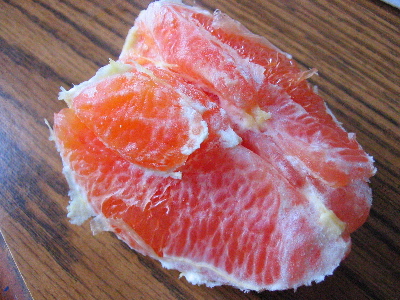notes on taste

Two centuries ago, taste had a certain mystique. Jean Anthelme Brillat-Savarin - a French lawyer who chose ponder the subject in his old age and produced a lovely pamphlet called The Physiology of Taste - believed that “the number of savours is infinite,” composed as they are of “an indefinite number of series of radical savors, all capable of combination in infinite variety of proportion. For Monsieur Savarin, the common designations of taste - “sweet, sugary, acid, bitter” were merely convenient general terms, concealing the universe that was much richer, and that could eventually be revealed and acquire a language of its own. For us, the primaries of taste are all there is. Sweet, salty, bitter, sour, and perhaps umami (the savory, meaty taste of some amino acids - glutamate, most famously) are not just in language - they have a chemical basis, each basic taste generating a unique identifiable response in our taste receptors. Had Monsieur Savarin lived to learn of it, he would have been heartbroken.
While primaries are what we taste, they are not what we experience. No combination of sweet, bitter, salty, sour, and umami will ever make an apple - or an apple crumble, or an apple stewed with some ginger and lemon and just a sprinkle of brown sugar and cinnamon (a lovely variation on apple sauce). But how is an apple sauce to be described - assuming that it is an unusually good apple sauce and worthy of description?
Our vocabulary of taste - in English, at least, and Russian as far as I know - is very poor compared to the vocabulary of color and sound. There is a reason for this, of course, and that is that we don’t talk about taste very much. It is a private experience - and perhaps shared meals are so meaningful because the knowledge of a meal cannot be conveyed to anyone who was not there. Nonetheless, a vocabulary of taste could be a useful thing, if only to let some overeducated - or very proud - cooks analyze their food to death. Such a vocabulary, oddly enough, has already been developed for smell, although it remains rather specialized.
Unlike colors and tastes, smells are composites of an enormous number of elements. Some textbooks on sensory perception will tell you that a human nose can distinguish between ten and forty thousand smells, but the number of smells that exist is effectively infinite. Perfume makers manage this multitude by working with some already-complex compounds. Vanilla and isobutyl phenal acetate (which does not smell of anything foody) together smell like chocolate. Vanilla, cinnamon, orange and lime smell like Coca Cola. Green mangoes smell like carrots, apricots, and grapefruit, as well as nail polish remover.* Recognizing shared elements can also be a way to think about taste. Kiwis, as we know, share something with strawberries. Jonathan apples share something with grapes. Almost everything has something in common with chicken. Discovering secret affinities between ingredients - or making, say, an orange-themed meal without any oranges - are only some of the games one could play with this knowledge. A new concept for Iron Chef, perhaps?
*See a lovely article in the New Yorker about the creation of perfumes: Chandler Burr, “The Scent of the Nile.” (3/14/2005, if they take it off the web).
Also, read Patrick Suskind’s Perfume if you haven’t yet.



